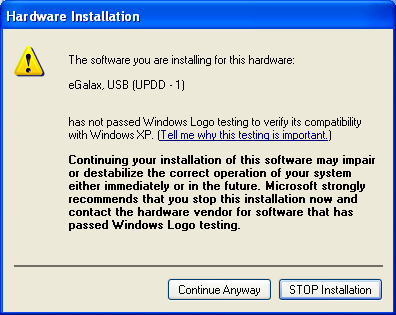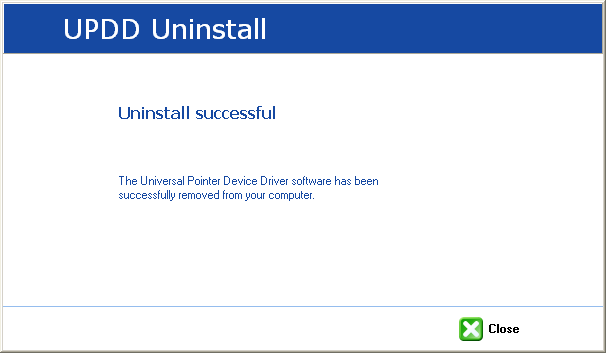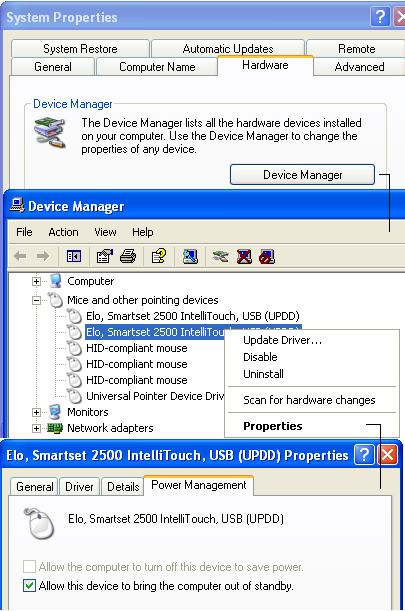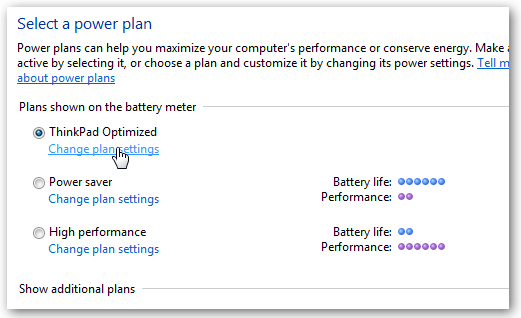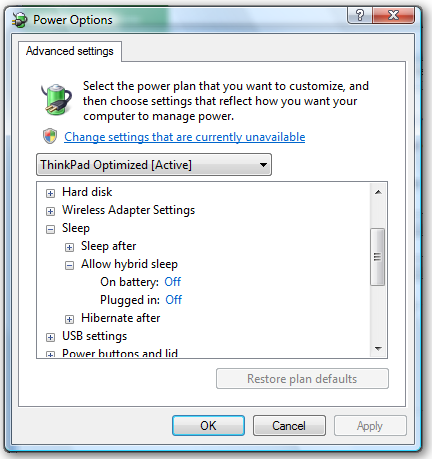|
Welcome to UPDD Windows desktop specific installation instructions and related notes for UPDD version 5.1.x. If using UPDD 4.x.x or 5.0.x please refer to previous Windows desktop installation instructions.
Development history can be viewed from the UPDD Console and can also be viewed here.
These notes should be followed to install the UPDD 5.1.x pointer device driver on Windows Desktops running Windows, 2003, XP/XPe, Windows 64 bit, Vista 32 / 64 bit and Windows 7, 8 and 10 32 / 64 bit. License NoticeThe software is licensed software and as such requires a license per system when the production version of the software is installed. Production software is either supplied by pointer device manufacturers or system integrators (who are entitled to distribute the driver) or is available directly from Touch-Base sales. Evaluation version restrictionsEvaluation software, which is available from our Download Centre is mainly used to test the touch function is working, has certain restrictions:
|
||||||||||||||||||||||||||||||||||||||||||||||||||||||||||||||||||||||||||||||||||||||||||||||||||||||||||||||||||||||||||||||||||||||||||||||||||||||||||||||||||||||||||||||||
DeliverablesUnless otherwise requested, the software is distributed via email as an HTTP link, in either compressed .ZIP format or in an executable .exe format. There are separate files for 32 and 64 bit systems. |
||||||||||||||||||||||||||||||||||||||||||||||||||||||||||||||||||||||||||||||||||||||||||||||||||||||||||||||||||||||||||||||||||||||||||||||||||||||||||||||||||||||||||||||||
System Requirements
|
||||||||||||||||||||||||||||||||||||||||||||||||||||||||||||||||||||||||||||||||||||||||||||||||||||||||||||||||||||||||||||||||||||||||||||||||||||||||||||||||||||||||||||||||
CD DistributionThe setup program is placed on the CD alongside a autorun.inf file. Insert the CD and the autorun file automatically invokes the setupnn.exe program if the autorun.inf file contains: [autorun] OPEN=.\Setupnn_05.01.nnnn.exe (where nn = 32 or 64 bit) Pre installation notes1. Uninstall
previous touch drivers 2. The
installer creates a folder tbtemp in %temp% as defined by the environment
variable TEMP. The environment variable and folder must exist. The component
to expand cabinet archive files must also exist. 3. USB
consideration 4. The
installation procedure is used to install the software for a single touch
screen / UPDD supported pointer device. In a multi-touch screen or pointer
device environment invoke the UPDD Console - Hardware dialog to
add additional non PnP devices after installation. USB (PnP) devices,
supported by the driver, will be added automatically as they are connected to
the system; however you will need to adjust the desktop association to newly
discovered devices. See the Multi monitor and
multi device documentation for further
information. 5. Windows
XPe 6.
Windows
8.x – very important note 7. Very
important PS/2 notes a) The
PS/2 device must be selected during installation; it is not a hot pluggable
device (unlike other PnP devices) and we have difficulties with manual
addition so the PS/2 devices (like other PnP devices) are not shown as a
device that can be added manually. USB PnP devices are automatically added
by the new UPDD PnP interface. b) It is
recommended that the system be booted with the ps/2 device plugged in prior
to install (same as for a normal mouse). We are concerned that some old BIOS’s
will release the PS/2 interrupt if no PS/2 device is seen on the system. c) During
extensive tests we found that on a couple of occasions the device did not
work after install. We have not been able to reproduce this install issue.
If you do find that the touch screen is not working after install then: 1. Check for a PS/2 UPDD entry in the Device Manager. 2. If a
UPDD entry is not seen use the hardware wizard to update the driver for
the ps/2 touch device to UPDD. Note – once or twice we got an error “Not
enough memory to complete this request” whilst switching drivers this way.
It always worked on the 2nd attempt. 8.
Signed
drivers 9. Sysprep
utilization 10. Very important BIOS settings issue Installation ProcedureIn the majority of cases the supplied setup program will be invoked to install the driver. In some situations, such as installing the minimum component, you may want to control the files that are installed on the system and this is covered in Manual install section Using the supplied set up programInstallation of the driver must been performed whilst logged on as a user with Administration rights. Please note this is not the same as running as an Admin user. The user account must have Administration rights. If you do not have these rights then in some OS you can right click on the setup.exe program and select ‘Run as administrator’ and enter the appropriated credentials as requested.
Expand the .ZIP file or download the setup program from the http link provided and then run the appropriate setup program. Run either the setup32 or setup64 depending on your system’s architecture.
Prior to installing, you should uninstall any UPDD version 3 or 4 driver. You can optionally install over previously installed UPDD version 5 drivers.
Once invoked, the install initially checks that the OS is supported will issue a notice if not and cease installation. It then checks that the driver has support for the system’s architecture. E.g. installing a driver only built for 32 bit system will not install on a 64 bit system. In the latter case you need to request a setup with the required support.
If the OS is supported the standard install (running the setup program without any parameters) will show a list of supported controllers in this build.
In the above example the supplied driver supports 2 USB devices and 1 serial device.
If installing for a non PnP touch device, such as a serial device, you need to select the controller from the list. PnP devices will be automatically discovered by UPDD driver so there is no need to select. If you select a serial controller you will be able to define the serial port. Additional non-PnP devices can also be added after install as required.
Keyboard hotkeys, via the Alt key, can be used to control the install dialog. Up and down arrow keys can be used to traverse the controller list, Alt C to cancel and Alt I to continue with install.
During install the system may issue certain warning dialogs, such as the installation of a non signed driver (if installing a non signed version of our driver!) and under Window 7 User Access Control dialogs to confirm updates to the system are allowed. If at any time during the install or after the first reboot the system asks for the location of the driver to complete install the folder to be selected is <program files>\updd (this should not occur!).
Once the install has completed and all being well the touch should now be active albeit not calibrated. If the cursor does not react and calibration fails then try rebooting the system – a reboot is currently needed for Win 8.x touch interface to work. If touch is still not working after install and reboot please refer to the troubleshooting section below. |
||||||||||||||||||||||||||||||||||||||||||||||||||||||||||||||||||||||||||||||||||||||||||||||||||||||||||||||||||||||||||||||||||||||||||||||||||||||||||||||||||||||||||||||||
Setup Install Options |
||||||||||||||||||||||||||||||||||||||||||||||||||||||||||||||||||||||||||||||||||||||||||||||||||||||||||||||||||||||||||||||||||||||||||||||||||||||||||||||||||||||||||||||||
|
-s |
Silent install mode |
|||||||||||||||||||||||||||||||||||||||||||||||||||||||||||||||||||||||||||||||||||||||||||||||||||||||||||||||||||||||||||||||||||||||||||||||||||||||||||||||||||||||||||||||
|
|
Running setup –s indicates that no UPDD install dialogs are to be shown. Default settings for the touch controller are used unless a clone file is found in which case the settings in the clone file are used. Only the first serial or Virtual device, if any are supported in the driver bundle, is configured. In both case, PnP devices will be handled as soon as they are discovered by the driver. |
|||||||||||||||||||||||||||||||||||||||||||||||||||||||||||||||||||||||||||||||||||||||||||||||||||||||||||||||||||||||||||||||||||||||||||||||||||||||||||||||||||||||||||||||
|
-n |
No default serial/virtual controller with silent option |
|||||||||||||||||||||||||||||||||||||||||||||||||||||||||||||||||||||||||||||||||||||||||||||||||||||||||||||||||||||||||||||||||||||||||||||||||||||||||||||||||||||||||||||||
|
|
Indicates that there is no default serial or virtual device (if supported in the bundle) configured automatically. In this case PnP devices will be automatically detected but serial or virtual devices, if supported in the package, will need to be added automatically. This can be combined with the silent option by specifying “-sn”. |
|||||||||||||||||||||||||||||||||||||||||||||||||||||||||||||||||||||||||||||||||||||||||||||||||||||||||||||||||||||||||||||||||||||||||||||||||||||||||||||||||||||||||||||||
|
-r |
Reinstall with silent option |
|||||||||||||||||||||||||||||||||||||||||||||||||||||||||||||||||||||||||||||||||||||||||||||||||||||||||||||||||||||||||||||||||||||||||||||||||||||||||||||||||||||||||||||||
|
|
Starting with version 5.1.702 installer has a new command line option “-r” for reinstall. This can be combined with the silent option by specifying “-sr”. The reinstall option 1. Does not remove / reinstall devices. 2. Does not replace the settings file. 3. Provide default values for new setting values. Existing settings are untouched, however if between the old and new version new settings have been introduced then suitable defaults are added for these. This is unlikely to be significant functionally. Performing a comparison of previous and new settings files might show differences attributable to this. This provides for an upgrade installation in many scenarios. Notes: 1.
Due
to the wide range of legacy versions and software configurations that could
be upgraded this process cannot be guaranteed. If using for a business
critical rollout then a check must first be made that a successful upgrade is
achieved for each version to be upgraded. 2.
The
silent option will hide all dialogs, with the exception of any critical
errors, including a restart warning message that could be issued due to a
number of factors, such as the inability to stop the current device driver: |
|||||||||||||||||||||||||||||||||||||||||||||||||||||||||||||||||||||||||||||||||||||||||||||||||||||||||||||||||||||||||||||||||||||||||||||||||||||||||||||||||||||||||||||||
|
Important silent install mode considerations: Silent install suppresses UPDD install dialogs. However there is always a possibility that system dialogs will be shown, either because you are installing an unsigned version of the driver or because UAC (Windows 7 user access control) settings dictate that the system seeks permission before changes are made to the system by the installer. Total silent install can only be achieved if the driver is signed and UAC is configured such that no user prompts will be issued or run with the correct administrator privileges. |
||||||||||||||||||||||||||||||||||||||||||||||||||||||||||||||||||||||||||||||||||||||||||||||||||||||||||||||||||||||||||||||||||||||||||||||||||||||||||||||||||||||||||||||||
|
-np |
No progress bar |
|||||||||||||||||||||||||||||||||||||||||||||||||||||||||||||||||||||||||||||||||||||||||||||||||||||||||||||||||||||||||||||||||||||||||||||||||||||||||||||||||||||||||||||||
|
|
Progress bar suppression |
|||||||||||||||||||||||||||||||||||||||||||||||||||||||||||||||||||||||||||||||||||||||||||||||||||||||||||||||||||||||||||||||||||||||||||||||||||||||||||||||||||||||||||||||
|
Clone |
Duplicate (clone) settings |
|||||||||||||||||||||||||||||||||||||||||||||||||||||||||||||||||||||||||||||||||||||||||||||||||||||||||||||||||||||||||||||||||||||||||||||||||||||||||||||||||||||||||||||||
|
|
Once installed the driver can be configured via the UPDD Console. These setting can be replicated (cloned) to a file in the UPDD Console – Status dialog – Dump settings option. This process will create a .reg file (4.0.x) or .ini file (4.1.x) which, for cloning purposes, should be renamed to upddclon.reg (UPDD version 4.0.x) or tbupdd.ini (UPDD version 4.1.x)
To use this file during UPDD setup, create a folder to hold the updd setup program (setup.exe) and a sub-folder UPDD_EXT within this folder to hold the clone file. E.g. To perform a 4.1.x clone install: C:\temp Setup.exe C:\temp\UPDD_EXT Tbupdd.ini
When setup is invoked it will find the clone file and perform a silent install using the settings within the clone file. The setup.exe should not be in a folder called c:\program files\updd
Note:- This method of cloning has certain limitations and is being replaced with a custom settings file as described below. The limitations with this method are that the clone file is only processed during install for the controllers defined in the clone file. Controllers plugged in after install will not inherit these settings. The settings file also has a fixed link to the location of UPDD application folder which could be different on a different language system, i.e. c:\program files\updd – English, C:\Programme\UPDD – German. There are other issues, hence being superseded. |
|||||||||||||||||||||||||||||||||||||||||||||||||||||||||||||||||||||||||||||||||||||||||||||||||||||||||||||||||||||||||||||||||||||||||||||||||||||||||||||||||||||||||||||||
|
File |
The setup program will copy any files placed in sub folder UPDD_EXT into the UPDD application folder during install, replacing any that previously existed. This can be used to update files contained within the setup program. |
|||||||||||||||||||||||||||||||||||||||||||||||||||||||||||||||||||||||||||||||||||||||||||||||||||||||||||||||||||||||||||||||||||||||||||||||||||||||||||||||||||||||||||||||
|
CDS |
Customised driver settings – available since UPDD 5.1.827 The install package will create UPDD settings file
tbupdd.ini. This contains the default driver, controller and calibration
settings. To install with user defined custom settings we now allow end users
to customise
settings
in a file - extra.ini. This file was previously embedded in the setup for
customised builds. This file can now be placed in the subfolder .\updd_ext
relative to the location of the setup*.exe file on the installation media
allowing most settings to be customised by an integrator. |
|||||||||||||||||||||||||||||||||||||||||||||||||||||||||||||||||||||||||||||||||||||||||||||||||||||||||||||||||||||||||||||||||||||||||||||||||||||||||||||||||||||||||||||||
Manual installThis install could typically be referred to as an .INF type install, that is, using the .INF file to install the kernel device driver and its dependant components. In the case of the UPDD driver a few more elements are required, as discussed below: You will
initially have to install on a system using the setup.exe to extract all the
components from the UPDD installer. You can then follow these instructions to
create a minimum install: 1) Create a UPDD application folder (typically <program files>\updd) 2) Copy all UPDD components (from a working system) to this folder 3) Copy tbupddsu.sys to the Windows driver folder (e.g. <windows>\system32\drivers) 4) Install using the appropriate inf file (e.g. xxxxv3mo.inf) in <program files>\updd folder (by using whatever strategy you use). See list of available .inf files below. 5) Install the tbupddwu service with the command Tbupddwu –I 4141 6) Modify the service entry to “Restart the Service” in an event of a failure. To do this you can run the wuauto.reg file. 7) Invoke Aidaemon and TIdaemon (Win 8.x) processes. Notes: 1) In cases where you want to minimize the number of files, leaving the bare minimum to allow the driver to function in the UPDD Application folder we believe you can delete most files in the UPDD application folder and leave:
These files must all be in the same folder. 2) In situations where you need the driver to run from a different folder you can update the setting ‘updd folder’ setting in the tbupdd.ini file (which will eventually be located in the new path!) [updd\parameters] Remember to copy the required files into this alternate path. 3) The .INF files that are used in the UPDD package are as follows. Select the one(s) that is(are) most suitable for your needs:
Install debug logOccasionally the UPDD installer encounters unusual situations as a result of unusual installation environments. Starting with UPDD version 5.1.1391 additional trace information is available to better identify problem areas. This is not a comprehensive trace but additional tracing will be added as and when required. This trace information is not useful for an end user and is intended for use by Touch-Base support.
These are the steps need to enable install tracing:
· Download DebugView from https://technet.microsoft.com/en-us/library/bb896647.aspx
· Run dbgview.exe from the downloaded zip package
· Check the options shown below are selected.
·
With
dbgview still running in the background run the installer with the option –dt
(detail trace)
·
Send
the information captured in dbgview to Touch-Base support.
Desktop and application touch interactionOnce the driver is installed and calibrated then the most basic touch interaction resulting from the touch screen being used is to perform mouse emulation such that a touch on the screen emulates a mouse button down, mouse movement and button up. In many cases this will satisfy simple single touch usage. However, there are a number of touch interfaces that can be utilised within our driver, as described below:
UPDD driver utilitiesThe installation process not only installs the driver but also a number of driver related utilities.
The main utilities are the UPDD Console (settings interface), Calibration utility, Test program and the Command Line interface. These are placed in the UPDD applications folder c:\program files\updd and some can be invoked from the Windows Program Manager and System Tray.
|
||||||||||||||||||||||||||||||||||||||||||||||||||||||||||||||||||||||||||||||||||||||||||||||||||||||||||||||||||||||||||||||||||||||||||||||||||||||||||||||||||||||||||||||||
CalibrationCalibration is a procedure used to align the pointer device with the graphically display area or desktop segment. When using the pointer device the mouse cursor should normally position itself under the stylus when it is in contact with the pointer device. If this is not the case then calibration will be required and this is described in full in the Calibration document. The UPDD driver also supports Toolbars, which also require calibrating, and this is covered in full in a separate Toolbar document. |
||||||||||||||||||||||||||||||||||||||||||||||||||||||||||||||||||||||||||||||||||||||||||||||||||||||||||||||||||||||||||||||||||||||||||||||||||||||||||||||||||||||||||||||||
ConsoleThe driver and device settings can be adjusted with the UPDD Console program and is described in full in the UPDD Console documentation.
Following a successful install the UPDD Console will list the configured and connected devices and allow changes to the driver settings as required.
In the above example a serial device has been manual selected (during install or using the ‘Add a new device’ option) and the driver’s PnP manager has detected two USB devices. The three touch devices have been configured to control individual monitors. Test programA simple test program is supplied to test the performance and accuracy of the touch device as handled by the UPDD driver. It can be used to view stylus input from single and multi-touch devices. Command Line interfaceA command line utility is supplied that can be used to perform certain configuration or device type functions. Useful driver settingsThere are a number of useful driver features that may be disabled by default by nevertheless are useful in some cases as highlighted here. Edge AccelerationIt may be required to be able to push the cursor to the extreme edge of the screen, especially to invoke features that are associated with the cursor reaching the extreme edge such as with Win 7 and Win 8 extended touch mode. To cater for the need to be able to place the cursor to the extreme edges there is an advanced setting in UPDD (UPDD Console, Properties, Advanced) to accelerate the cursor toward the edge of the screen as the stylus approaches the edge. The values shown below work well:
These settings are useful to invoke any application or function that is invoked by placing the system point to the edge of the display.
A collection of other general driver settings are described here.
|
||||||||||||||||||||||||||||||||||||||||||||||||||||||||||||||||||||||||||||||||||||||||||||||||||||||||||||||||||||||||||||||||||||||||||||||||||||||||||||||||||||||||||||||||
Serial port issuesChange serial port connection The UPDD Console - Hardware tab allows the COM port name to be reassigned after installation. Serial to USB adaptors If using a serial to USB adaptor, select the appropriate name in the COM port selector. Should the serial port connection not be working there are a number of procedures to follow to help identify the problem as described in the knowledge base article here. |
||||||||||||||||||||||||||||||||||||||||||||||||||||||||||||||||||||||||||||||||||||||||||||||||||||||||||||||||||||||||||||||||||||||||||||||||||||||||||||||||||||||||||||||||
UninstallThe driver can be removed via the Windows Control Panel, ‘Add/Remove Programs’ or ‘Programs and Features – Change/Remove’ option:
Select the ‘Universal Pointer Device Driver’ entry in the Add/Remove Programs dialog.
The automatic uninstall program can also be invoked by calling the program …\updd\uninstall.exe. For Silent uninstall, with no user dialogs being shown, pass the parameter UNINSTALLS i.e …\updd\uninstall.exe UNINSTALLS. Note – earlier versions of the uninstall program needed the parameter UNINSTALL to be passed to perform the normal uninstall procedure. Running an earlier version without any parameters will invoke an install – don’t ask!
Please note: The uninstall process does not have any progress bar and can take upwards of 1 minute to complete, depending on system speed. On completion the following dialog is shown:
ManualTo manually uninstall the driver components you need to:
Following the above a reboot is required to remove the driver and daemon processes. General NotesDriver ComponentsThe standard install procedure installs the following components:
|
||||||||||||||||||||||||||||||||||||||||||||||||||||||||||||||||||||||||||||||||||||||||||||||||||||||||||||||||||||||||||||||||||||||||||||||||||||||||||||||||||||||||||||||||
Processes
Device Manager entries
In the example below the Win 7 system has two monitors, hence two UPDD Virtual HID entries - one for each monitor, one USB touch device and support for serial devices (which would be connected to a Com port if it was configured)
Processes and Device Manager notesSome OEM customers did not want the driver processes and Device Manager entries to be created if no devices are discovered (announced) within a certain period of time. To accommodate this request, under version 5.1.1107 and above the installer no longer installs the “Universal Pointer Device Driver” (non pnp) device entry as shown above. This is now performed by User Mode driver (tbupddwu) at the same time as the UPDD Virtual HID (upddvh) installation. The installation of the non pnp instance and upddvh is executed only if the setting startupdetectionseconds is zero or does not exist OR one or more devices have been announced to the user mode driver. This setting is in [updd\parameters] and would normally be set in a custom build. If startupdetectionseconds seconds elapse from the time the first api based program connects without a device being announced the driver stops issues an UNLOAD message to tell all api programs to terminate and 5 seconds later the driver stops itself with a service stop command. This approach means that if no device is announced then no updd drivers or programs are loaded. NB once the software detects a device this operation is not reversed if the device is unplugged (although by deleting the upddvh and non pnp entries in the device manager this can be achieved). NB a serial device is “announced” at startup if it is selected as an installed device. If using ‘tbutils nodevice’ command line to set this value after install all Device Manager entries would need to be manually deleted and the system rebooted. This option is mainly for OEM systems that install UPDD on a wide number of system but in some cases a UPDD supported device is not in use and in this case they do not want unnecessary entries in the Device Manager or Processes running. Daemon tasksThe daemon tasks run in the background and perform a number of functions related to the driver and user interface. The driver will still function for normal touch usage without the daemon task running but may not work as expected when using some of the more advanced features. Multi-monitor and multi-device supportMulti-monitor and multi pointer devices are supported with this driver and this functionality is covered in full in the multi monitor and device document, Windows section. |
||||||||||||||||||||||||||||||||||||||||||||||||||||||||||||||||||||||||||||||||||||||||||||||||||||||||||||||||||||||||||||||||||||||||||||||||||||||||||||||||||||||||||||||||
Display rotation considerationsUnder Windows there are various methods for rotating the desktop and UPDD will work with most rotate implementations as explained in detail in the separate rotate documentation. |
||||||||||||||||||||||||||||||||||||||||||||||||||||||||||||||||||||||||||||||||||||||||||||||||||||||||||||||||||||||||||||||||||||||||||||||||||||||||||||||||||||||||||||||||
System SettingCertain system settings may affect the functionality of the pointer device. This section highlights some of the settings that may need to be changed as required. Mouse settingsDouble click capabilities are affected by the system’s Mouse settings. To achieve a double click using the pointer device these settings need to cater for the type of device in use. A touch screen may well require different settings to that required by a mouse. The main setting that affects the ability to double click is the double click speed. If this is set too fast it may be impossible to produce a double click. Ensure this is set to an appropriate value in the mouse settings to allow for double clicks via a stylus.
The UPDD Console, Click Mode dialog, System Mouse settings will invoke the Windows Mouse settings as shown in the following example:
More information on double click settings are available here. Remote Wakeup settingsSome touch devices can be used to bring a system out of sleep/standby/hibernate. These sleep levels are referred to as power states and can range from S1 to S4, whereby S1 is the lightest and S4 the deepest sleep. Our driver supports power states S1 through S3. S4 normally requires the power button to be pressed to resume so external devices are not capable of returning the system from this state. If the device is capable of Remote Wakeup you also need to specify in the Device Manager (Start, Control Panel, System, Hardware tab, Device Manager) that the device can be used for this purpose, as shown below:
In the Device Manager, identify the UPDD device entry, right click to bring up the device menu, select Properties, Power Management and set accordingly.
To see the devices able to wake up the system use the command ‘powercfg –devicequery wake_armed’ as below:-
Remote Wakeup notes1) The system must be configured to allow the device to bring the computer out of standby. 2) The device must be capable of interfacing with the system to wake it up. Not all touch screen controllers are able to perform this function 3)
We
have found that some environmental settings can affect the ability of certain
devices to return a system from standby. In our tests under Vista we found
that the ability of some devices can be affected by the “hybrid sleep”
setting whereby the device can be used to return a system from standby, sleep
or hibernation but not the new ‘hybrid sleep’ state. |
||||||||||||||||||||||||||||||||||||||||||||||||||||||||||||||||||||||||||||||||||||||||||||||||||||||||||||||||||||||||||||||||||||||||||||||||||||||||||||||||||||||||||||||||
Touch UtilitiesVirtual
Keyboards Mouse CursorA Windows cursor scheme settings program TBcursor is shipped with UPDD and installed in the UPDD Application folder. TroubleshootingFollowing successful installation and reboot of the system (if requested/required) the device should respond to UPDD calibration (a moving cursor does not always indicate UPDD driver is in control of the touch device). If this is not the case then follow these procedures to help identify the fault: Check the device is seen by the driver The UPDD Console will either show no device or list a selected device in Red text if the device is not found on the system or is being handled by another 3rd party driver: Only when the device is listed in black text is the driver connected to the device. No / red listing can be because the device is not plugged in or if the device plugged in is not supported by the driver or the device is being handled by another 3rd party driver, such as the standard HID driver. Ensure the device is plugged in and listed in the Windows Device Manager is that expected by the driver and also identify if the device listed (by Manufacturer, USB Vendor id and Product id) is that expected by the driver. Uninstall any other 3rd party driver. If you have just installed, try rebooting, especially if no name is listed in the console.
It was reported that on a multi-monitor system, after successfully calibrating each touch screen, that some appeared not to work or the touch was not calibrated. Further investigation showed that the monitor scaling information held by the driver did not match that seeming being used by Windows and that this mismatch was the cause of the multi-monitor calibration issues. It was discovered that a Win 8 specific setting was causing the issue in that this setting allows Windows to rescale the displays. This issue was rectified by setting the “Let me choose one scaling level for all my displays" and set the size to the smallest level:
Very important BIOS settings issue
|
||||||||||||||||||||||||||||||||||||||||||||||||||||||||||||||||||||||||||||||||||||||||||||||||||||||||||||||||||||||||||||||||||||||||||||||||||||||||||||||||||||||||||||||||
ContactFor further information or technical assistance please email the technical support team at technical@touch-base.com
|
||||||||||||||||||||||||||||||||||||||||||||||||||||||||||||||||||||||||||||||||||||||||||||||||||||||||||||||||||||||||||||||||||||||||||||||||||||||||||||||||||||||||||||||||
